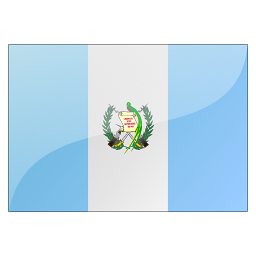



This region is an interesting mix of local villages, often with little Spanish spoken in favor of Indigenous languages, larger cities and some truly top-notch tourist attractions. It can be beastly hot at times, particularly just before the rainy season from February to May. Oddly, this is when some of the sights are best visited, as they are most known for swimming, spelunking, or getting wet and muddy.

Spreading onto a peninsula at the base of the volcano of the same name, San Pedro remains among the most visited of the lakeside villages – due as much to its reasonably priced accommodations and global social scene as to its spectacular setting. It's a backpacker haven – travelers tend to dig in here for a spell, in pursuit of (in no particular order) drinking, fire-twirling, African drumming, Spanish classes, volcano hiking, hot-tub soaking, partying and hammock swinging.

San Juan La Laguna is just 1.2 miles (2km) west by road from busy San Pedro, on a rise above a spectacular bay, but this neat, mellow village has escaped many of the excesses of its neighbor, and some travelers find it a more tranquil setting in which to study Spanish or experience local life. San Juan is special: the Tz'utujil inhabitants take pride in their craft traditions – particularly painting and weaving – and have developed their own tourism infrastructure to highlight their culture to outsiders.

Antigua's beguiling beauty starts to seduce the moment you arrive. Once capital of Guatemala, its streetscapes of pastel facades unfold beneath the gaze of three volcanoes, and meticulously restored colonial buildings sit next to picturesque ruins in park-like surroundings. The city's World Heritage–listed status means that even fast-food chains have to hide themselves behind traditional building facades.

The most striking feature of Tikal is its towering, steep-sided temples, rising to heights of more than 144ft (44m), but what distinguishes it is its jungle setting. Its many plazas have been cleared of trees and vines, its temples uncovered and partially restored, but as you walk from one building to another you pass beneath a dense canopy of rainforest amid the rich, loamy aromas of earth and vegetation. Much of the delight of touring the site comes from strolling the broad causeways, originally built from packed limestone to accommodate traffic between temple complexes. By stepping softly you’re more likely to spot monkeys, agoutis, foxes and ocellated turkeys.

Vast, sparsely populated and jungle-covered, Guatemala's largest and northernmost department is a wonderland of exploration. Whether it's the spectacular architectural achievements of the Classic Maya, the bounty of the forest or the chance to lounge lakeside that inspires you, it's all here in abundance.

One of the prettiest of the lakeside villages, San Marcos La Laguna lives a double life. The mostly Maya community occupies the higher ground, while expats and visitors cover a flat jungly patch toward the shoreline with paths snaking through banana, coffee and avocado trees. The two converge under the spreading matapalo (strangler fig) tree of the central plaza.

Mitt i Guatemalas hjärta gömmer sig en oas. Inbäddad i regnskogens djup, långt ifrån civilisation och bekvämligheter. Semuc Champey, den feta vattenparken varje resenär med barnasinnet kvar drömmer om.

Lívingston is unlike anywhere else in Guatemala. Its Garifuna people, their colors, culture, rhythms, flavors, and disposition, are the best reason to visit – nowhere else in Guatemala will you find such a fun and relaxed vibe. But it's not just the people: good beaches are nearby and the slow-and-easy take on life is enchanting. Here boats lie derelict in picturesque decay; people paddleboard or kayak lazily amid refreshing ocean breezes; and pelicans soar overhead as happy hour starts in late afternoon. It's just lovely.

Depending on who you talk to, Guatemala City (or Guate as it's also known) is either big, dirty, dangerous and utterly forgettable, or big, dirty, dangerous and utterly fascinating. Either way, there's no doubt there's an energy here unlike anywhere else in Guatemala. It's a place where dilapidated buses belch fumes next to BMWs and Hummers, and where skyscrapers drop shadows on shantytowns.